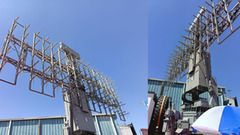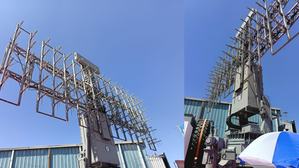

Bengaluru, Feb 12 (IANS) The Defence Research and Development Organization (DRDO) has unveiled the country's first VHS (Very High Frequency) radar, designed to detect fifth-and sixth-generation stealth aircraft which are perceived as great threats to national security, at Aero India 2025 Bengaluru.
The advanced VHF Surveillance radar is currently in the trial stage. It is a latest-generation digital phased array radar with element-level digitisation and optical interfaces.
The radar can operate in high-clutter environments due to its high dynamic range, made possible by element-level digitisation. It can function in both staring and rotation modes. This radar can also be integrated with dedicated tracking radars as a cueing radar, offering a comprehensive solution for Air Defence, according to Electronics and Radar Development Establishment (LRDE), a research and development establishment in India that operates under DRDO.
It can be mounted in mountainous or other challenging terrains. The radar has a detection range of up to 400 kilometres.
The LRDE personnel are confident that the VHS radar with stealth technology will be ready for use by the Indian Air Force (IAF) in about two years and a team of 50 to 60 experts and personnel are working on the project.
Shivashankar from LRDE, talking to IANS, said that this radar represents a breakthrough innovation in stealth target detection in India. It will be capable of detecting all fifth- and sixth-generation aircraft.
"It is a VHS surveillance radar that operates at a low frequency to detect stealth targets such as B2 bombers, F-117, and F-35 aircraft at a range of 400 kilometres. This radar is deployed using HLVs, and both vehicles can operate in all terrains. The radar can be deployed at any location within 20 minutes."
He further stated, "This radar features both steering and rotation modes of operation. In steering mode, it operates within a plus and minus 45-degree range. The radar is equipped with state-of-the-art technology using active array electronics. It is a fully digital radar, allowing us to implement advanced adaptive array signal processing algorithms to counter clutter and multiple jammers."
Currently, India does not have an indigenous low-frequency radar; these radars are presently imported. This new radar will enable India to develop anti-stealth capabilities. It will allow both target tracking and simultaneous surveillance. Stealth target detection will be significantly enhanced by this radar, according to Shivashankar.
"This project was initiated two years ago and is now in the testing stage. In just two years, we have completed the radar's design, development, and manufacturing. We are now in the final stage," he stated.
--IANS
mka/svn